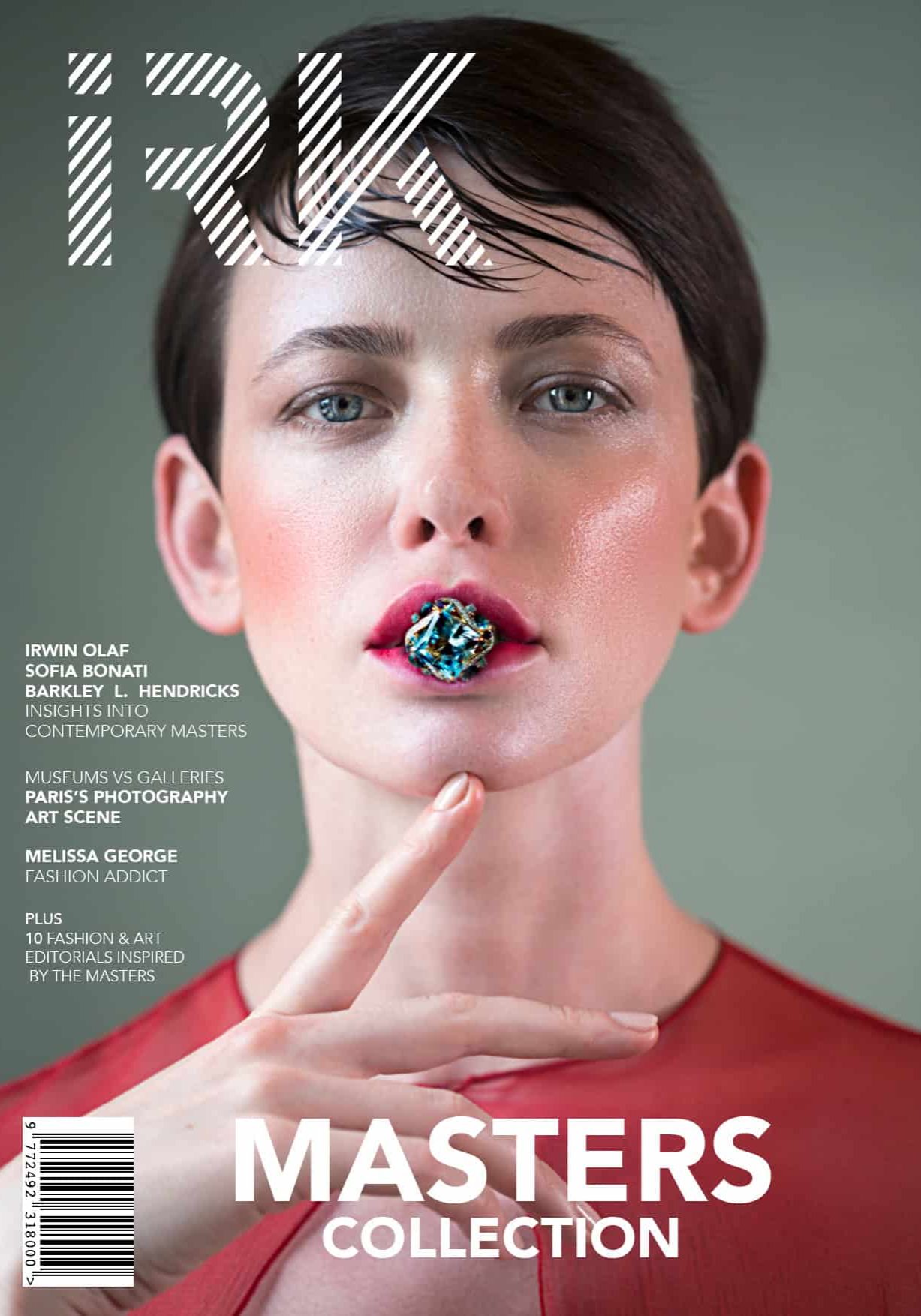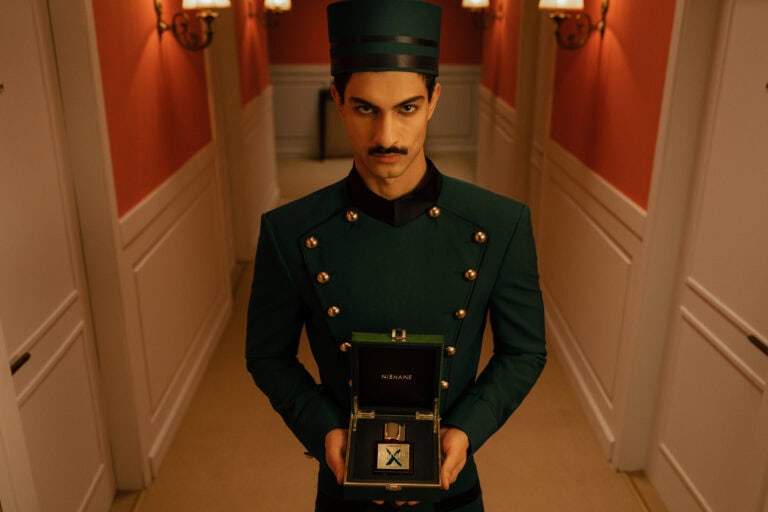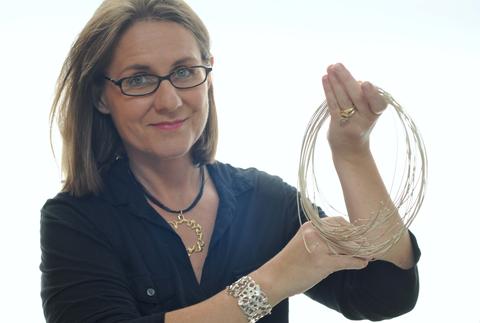
KATRIN ZIMMERMANN: JEWELRY & GLOBALISM IN HARLEM
IRK Magazine
Katrin Zimmermann slid a silver ring onto her index finger. It looked simple, flat-topped and gem-free. Smiling, she twisted it ninety degrees to reveal a protruding spike. “I call it the Subway Ring,” said Zimmermann, who designed the piece.
Zimmermann, 51, is the creator of Ex Ovo, a Harlem-based jewelry business straddling the worlds of art and design. Her work, which expresses cross-cultural connections through simple forms, convenes to the minimalist aesthetic dominating the New York fashion scene.
Born in Germany, Zimmermann grew up with a strong awareness of globalism: her mother imported and exported machine tools with China. When she accompanied her mother on a business trip in 1979 at the age of 13, she discovered a tranquil, car-free world of blues and greens. This experience cultivated Zimmermann’s affinity for other cultures, which led her to pursue art and archaeology in college; an education based in London incorporating travel through East Asia. Today she speaks 4 languages, including both ancient and contemporary Chinese.
Zimmermann found her way into jewelry design “as a fluke,” she said. She decided to extend a stay in New York City by attending the Fashion Institute of Technology for a student visa. “I thought it was a complete joke,” she said, until she realized she had a talent.
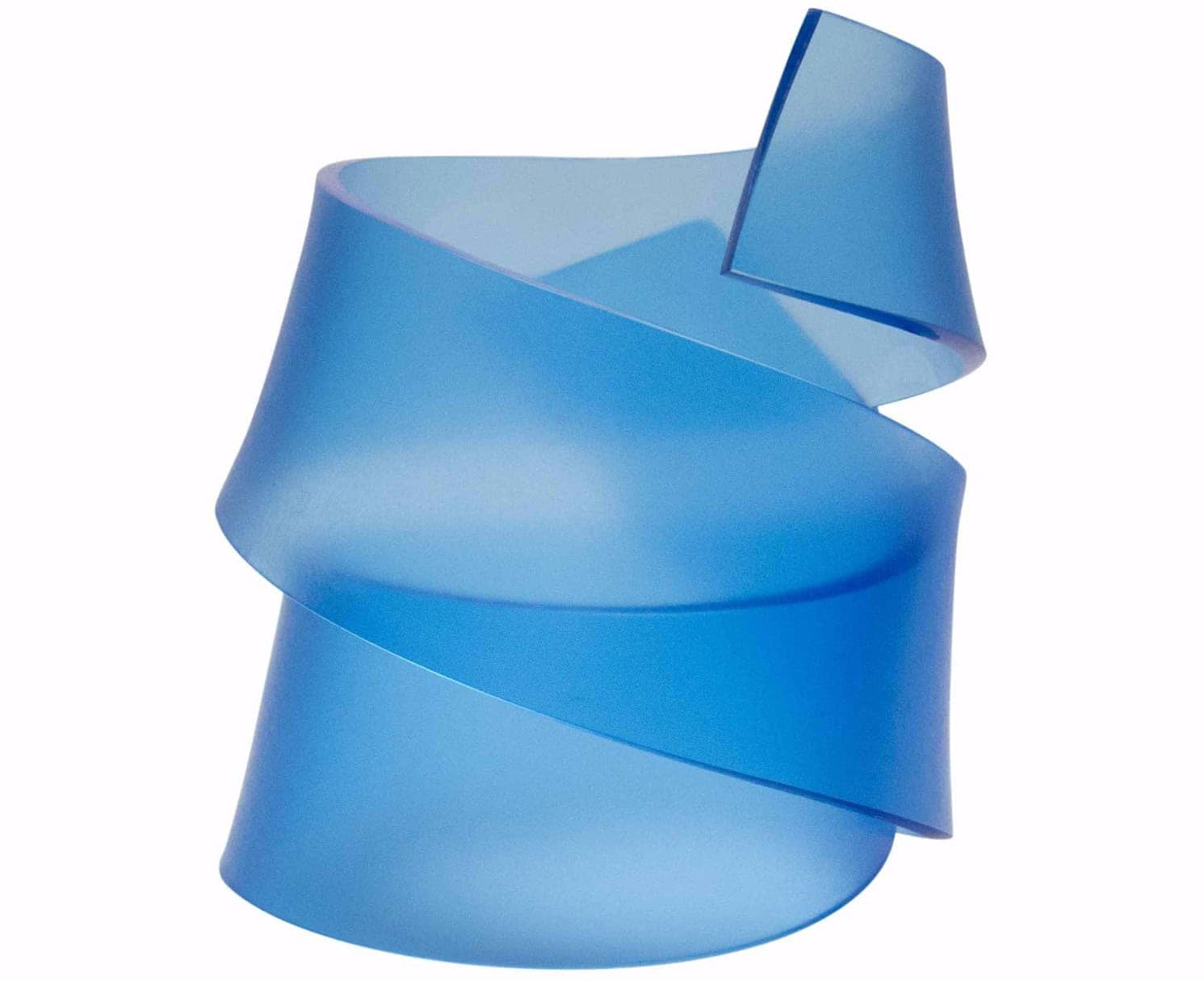
Blue Acrylic RIBBON SCULPTURE BRACELET
Her brand, Ex Ovo, unites the multiculturalism inherent to archaeology with the medium of jewelry design. The name exemplifies this paradigm; inspired by the removal of jewelry from its packaging, she selected Ex Ovo, or “out of the egg.” Through her craft, she channels the myriad of languages and cultures that have shaped her past.
Each piece designed by Zimmermann exists as a neo-artifact representing a pan-cultural theme she has observed. She conceived her African Necklace, a nest-like necklace of overlapping metal arcs, after considering how Ndebele people of South Africa and the Karen people of Myanmar both elongated their necks with gold coils despite never interacting with one another.
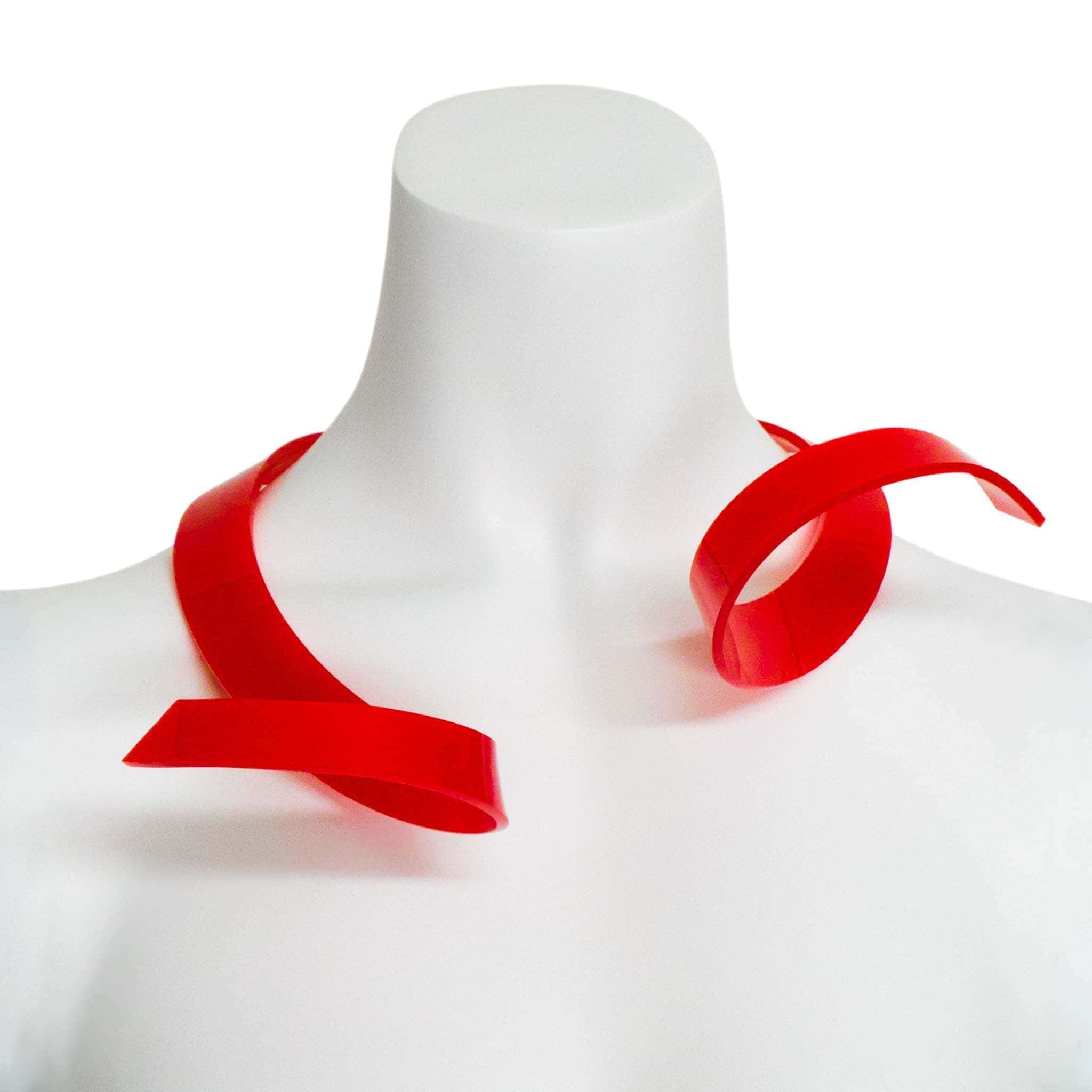
Red Acrylic DOUBLE HALF LOOP NECKLACE
To create the necklace, Zimmermann first sourced the necessary type of cable from Europe—fine sterling silver wire, twisted. Other silver cord lacks structure, she said. “It usually hangs down like crooked spaghetti.” With the material, “I chop it up, and sodder the ends shut,” she said. Based on the color she seeks, Zimermann sometimes gold-plates or oxidizes the cable. She originally fashioned the necklace to clasp shut, but realized she preferred wearing it opened and adjusted the design accordingly. Her favorite creation, she often wears the African Necklace to industry events. Zimmermann said she would love to see it worn by actress Lupita Nyong’o.
Zimmermann’s work has continued to evolve over time. At its inception in 1992, Ex Ovo sold fine jewelry, primarily sterling silver and diamond pieces. She has since transitioned to acrylic, a plastic she melts and molds. “It’s as liquid as fabric,” she said, fluttering her shirt as she spoke. The necklaces evoke the ephemerality of ribbons contorted in the wind. “No two are alike,” she said. “I’m not boxed in.” She also finds great inspiration in Japanese art, particularly the “idea of wabi-sabi” and its consideration of positive and negative space. Traditional Japanese paintings tenant the walls of her home alongside graphic, rough-brush stroked drawings by artists such as Oliver Herring.
Zimmermann begins each acrylic piece by using Adobe Illustrator to draw a flat pattern, spiral-like in nature. She then laser-cuts the drawing onto a panel of plastic, “the same acrylic that banks use to keep tellers safe.” The result resembles a whimsically-cracked window. Finally, after removing it from the surrounding plastic, she heats the cut piece to melting point and molds it into a form with only 45 seconds to manipulate the hot material before cooling sets in. Thus, she said she considers the process “two-and-a-half-dimensional.” Each product, structural even independent of a wearer, asserts its identity as a vessel rather than a discrete sculpture through sensual hollows and voids that allude to skeletal curves. She is currently developing more acrylic work that considers transparency and semi-transparency. “I’m trying to minimize colors,” she said.
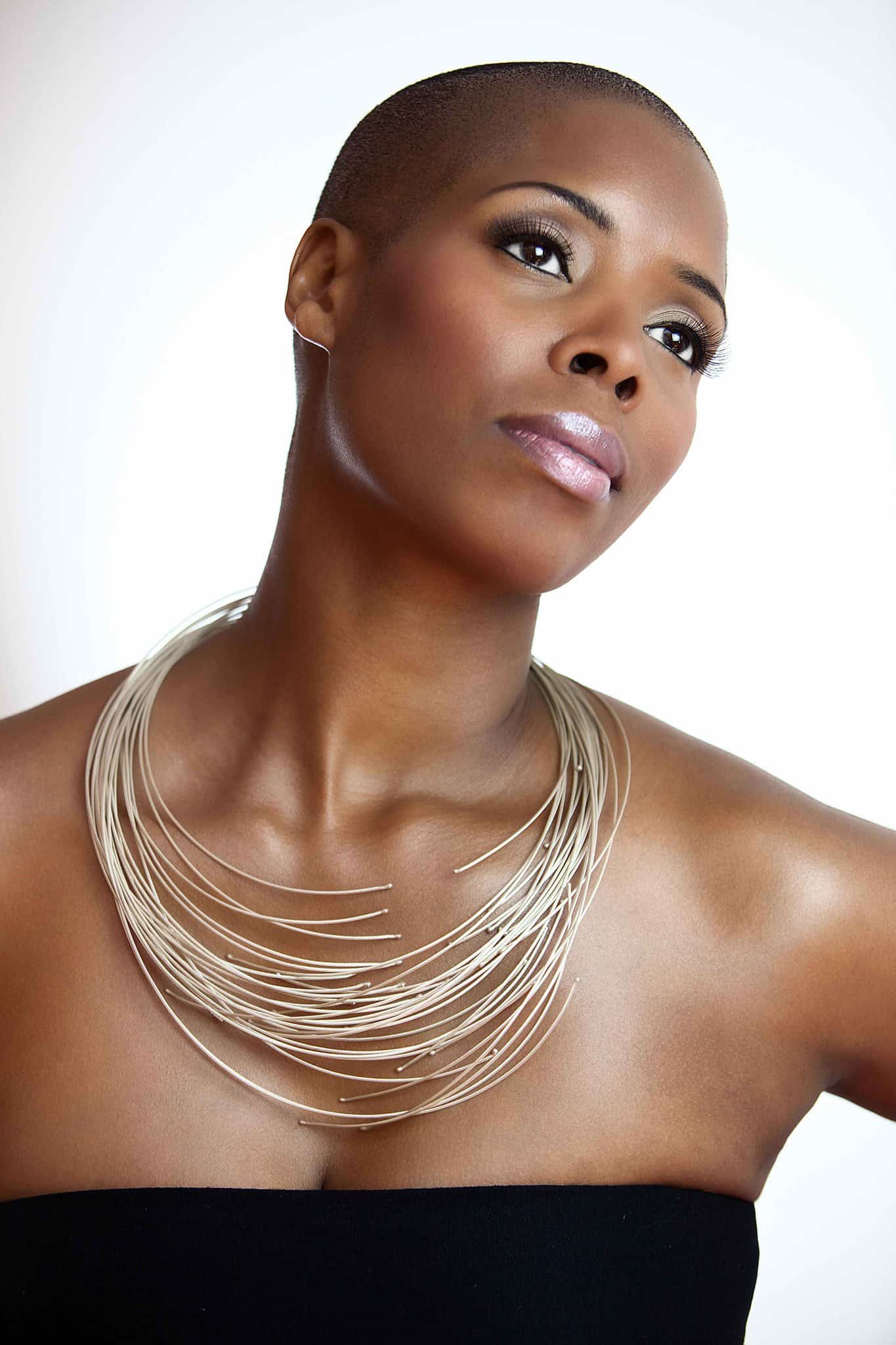
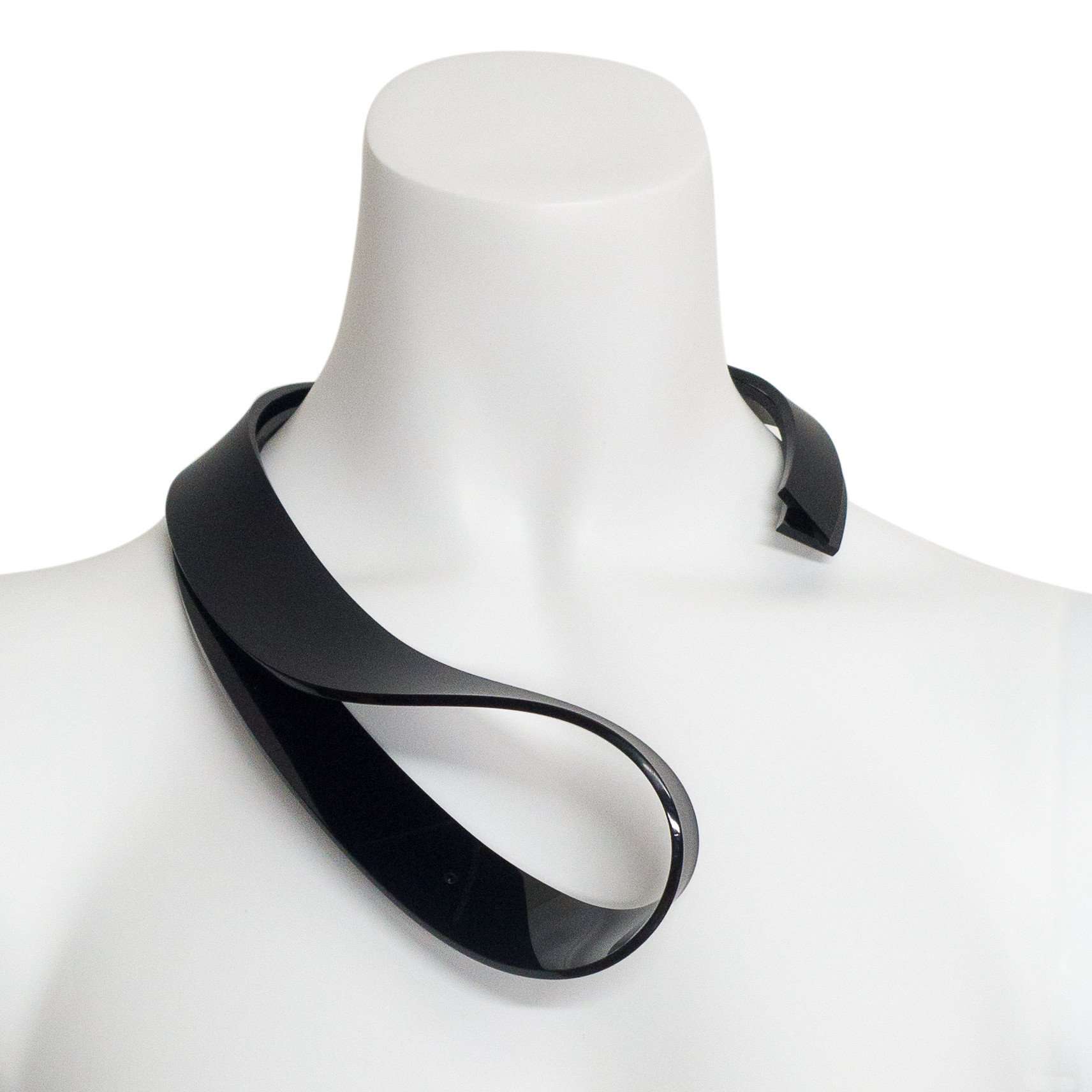
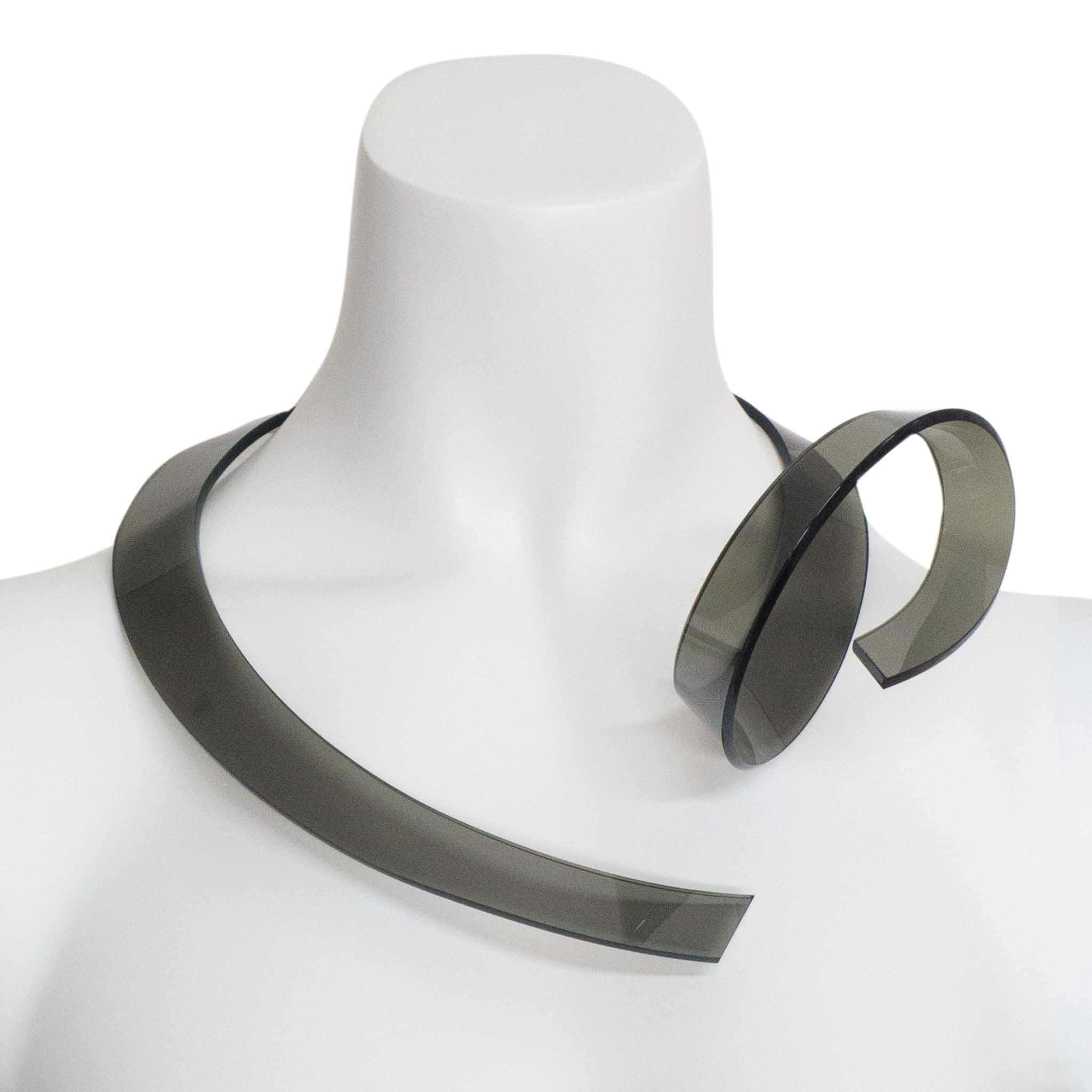
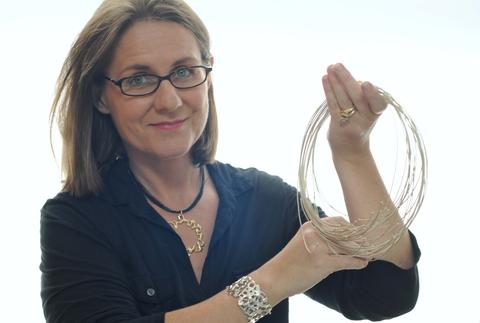

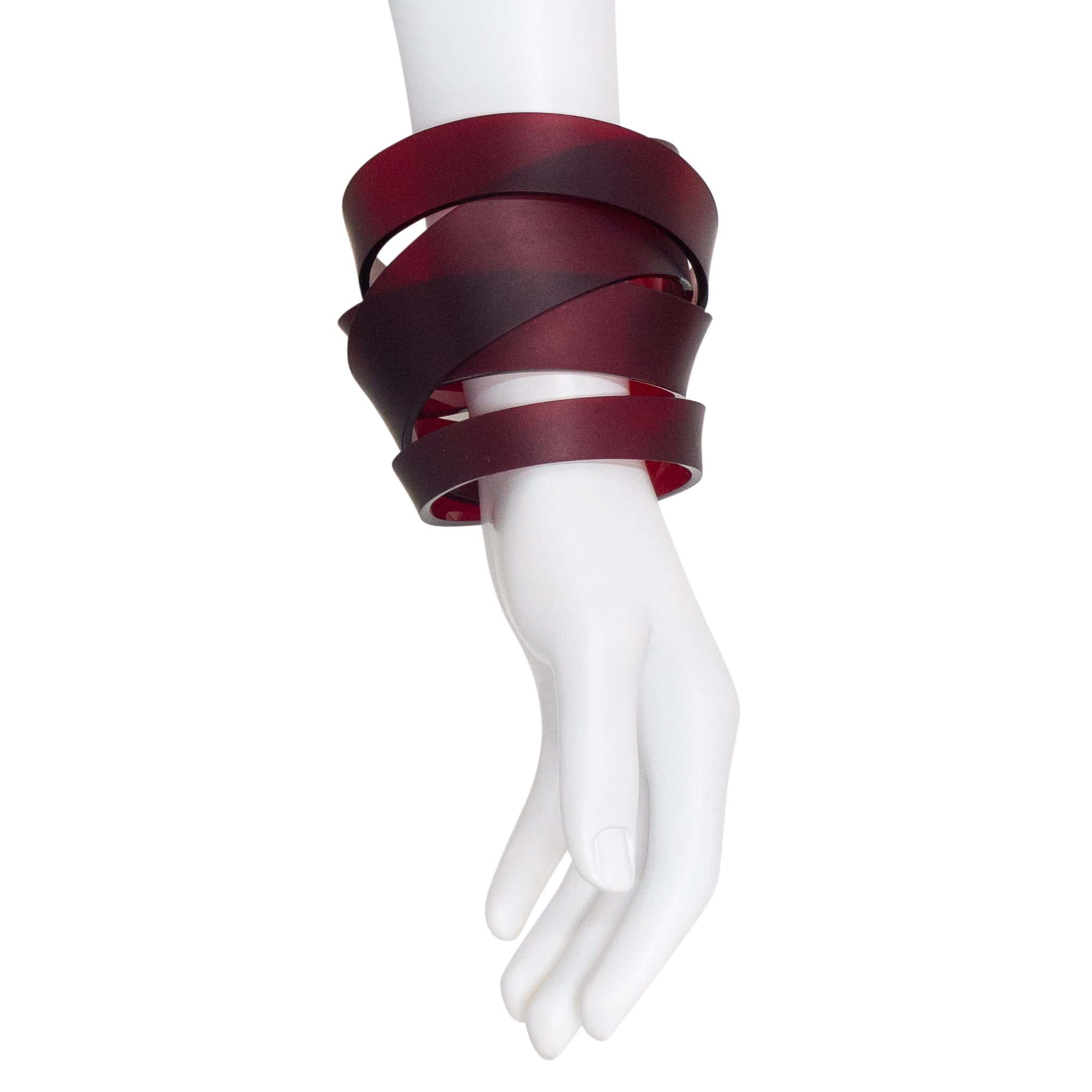
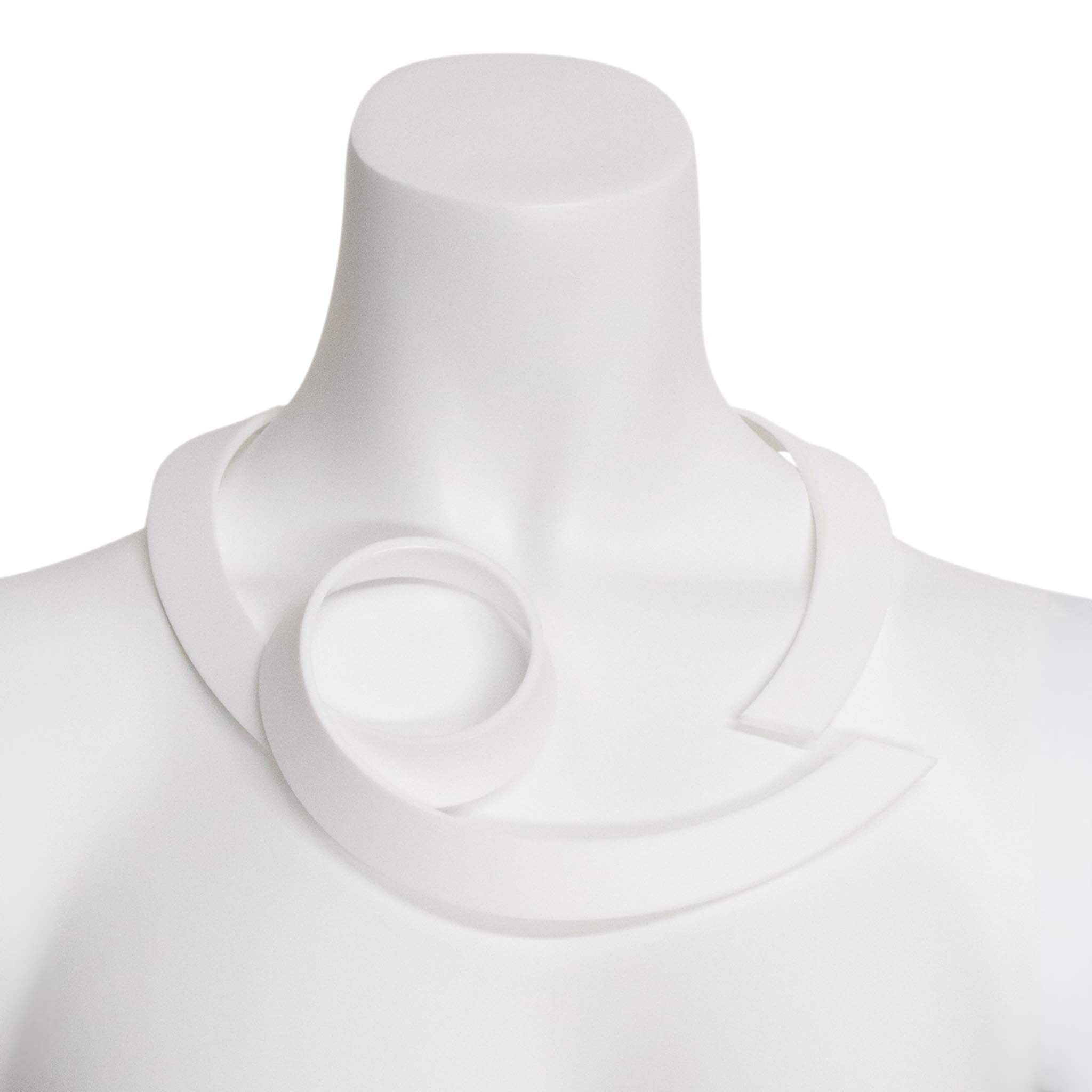
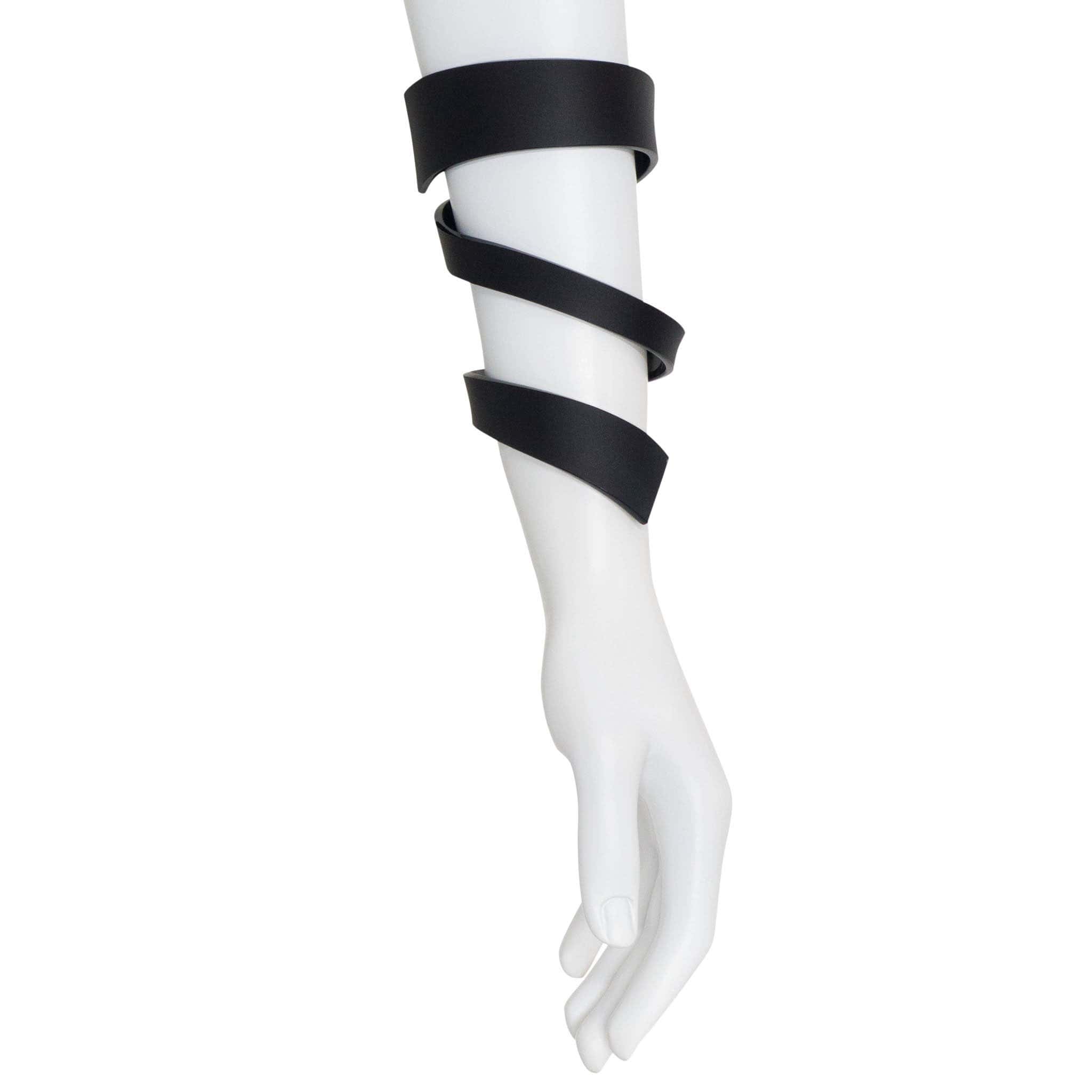

Zimmermann has sold her work at museums such as the Guggenheim and the Museum of Modern Art, though her pieces have a burgeoning editorial interest. Vogue Italia featured Ex Ovo in an April 2017 spread, and Glamour and Harper’s Bazaar have shown her work in prior years.
While her work has graced Liv Tyler, Halle Berry, Noel Gallagher, Kate Moss, Lucie de la Falaise, Arthur Cohen, Keith Richards and his dogs, Eartha Kitt, Nile Rodgers, Courtney Love, Britney Spears, and many others, she takes great pride in dressing all visually creative people. Many architects are clients of hers, she said, such as the late Zaha Hadid, who Zimmermann considered “sort of a friend.” She remembered Hadid exhorting her to make jewelry in aluminum because of the material’s pragmatic lightness.
The jewelry has street appeal as well, said Pat Cantor, 70, a former editor at Harper’s Bazaar and the godmother of Zimmermann’s daughter. “Women have bought jewelry off of my body,” Cantor said. “It looks as good on me as someone thirty years younger.” She maintained that Ex Ovo’s acclaim defies a demographic. “Men love the jewelry as much as women. They love the way it looks and the artistry!”
For more information on designer Katrin Zimmermann and her collection, visit exovo.com.
***All photos courtesy of Katrin Zimmermann***
#ExOvo #KATRINZIMMERMANN #JEWELRY #vogue #glamour #jewelry #fashion #design #Acrylic #wearableart #AfricanNecklace #Ndebelepeople #asia #harlem #katrinzimmermann
Share this post

